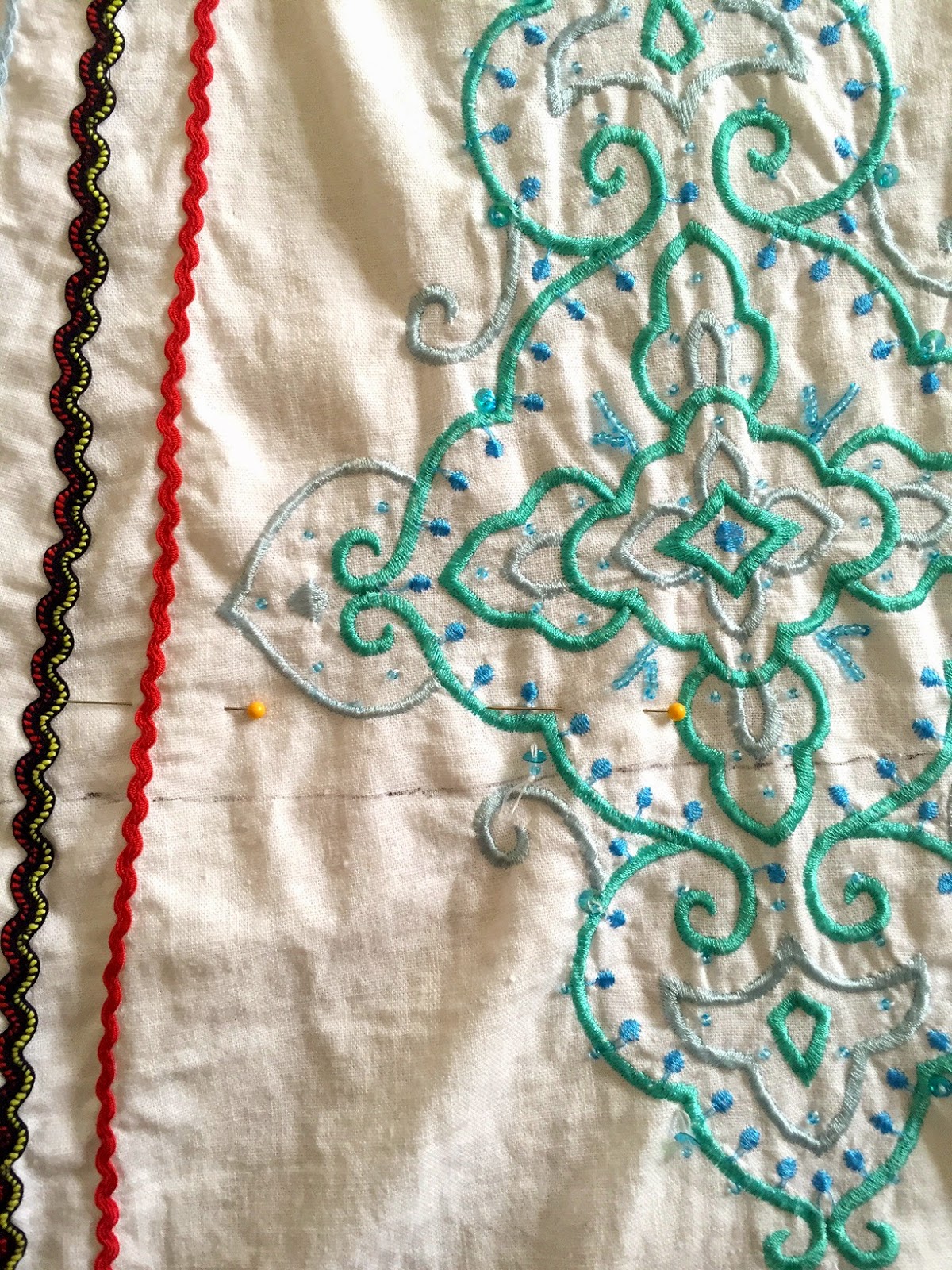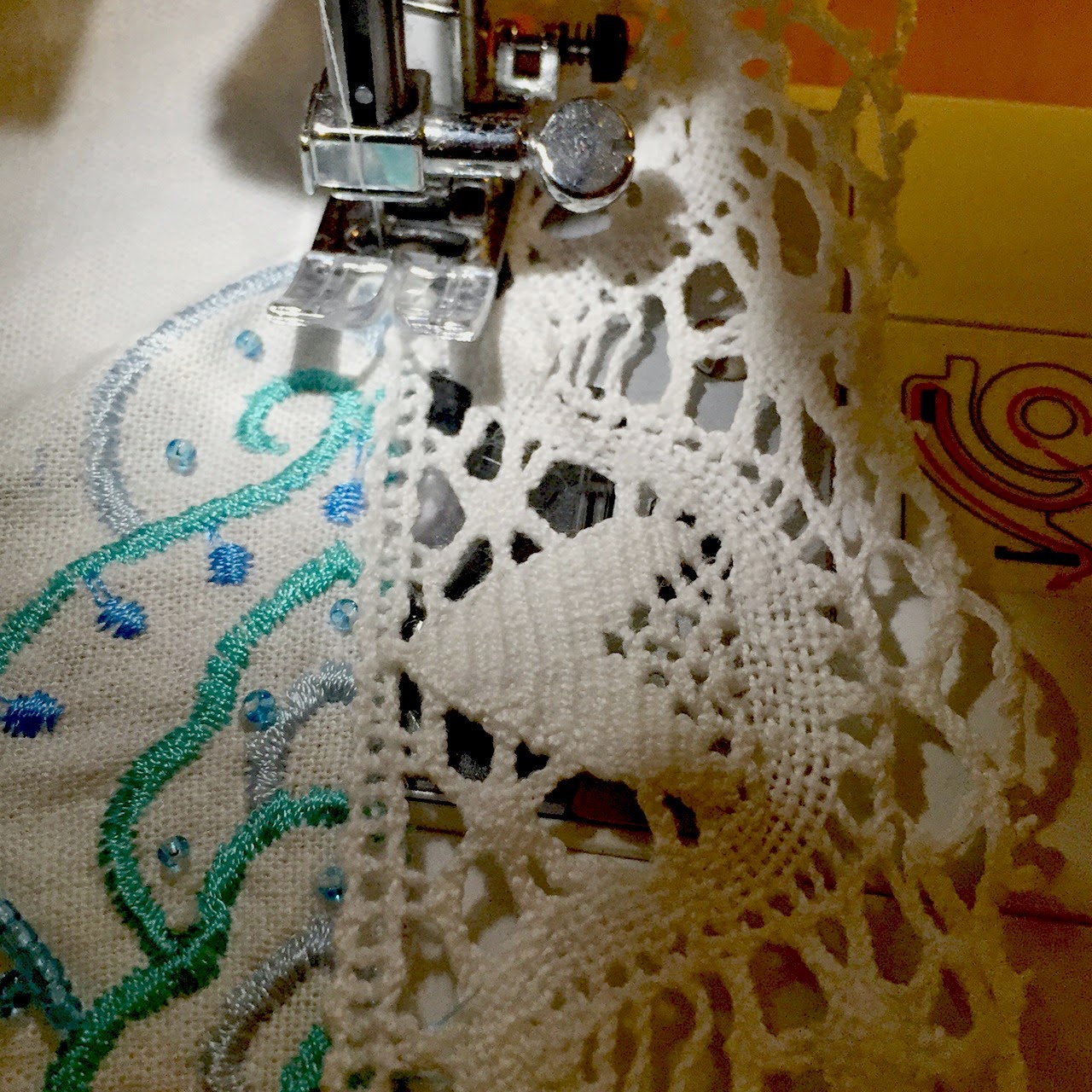The Power of the Sari
Can we talk about the sari for a minute? Although saris are traditionally worn as clothing by the stunning women of India, they are also a great source of large swaths of fabric. You can often find them in rich, saturated colors, patterns and textures at very reasonable prices.I recently purchased this gorgeous silk vintage sari on Ebay from the seller sushila_art.The cost with shipping from India was $20. When it arrived, I was stunned by its beauty and amazed by its size - 16 feet long x 42 inches wide.

Most saris have a main body color (the smaller green paisley pattern shown above) and an accent color on the end which is typically no more than a yard long. They also come with a cotton band along part of one side (the one in the photo below is green). This band is useful is if you want to actually wear the sari but can be easily removed with a few snips a pull of the thread attaching it.
There are so many things you can do with a sari. I can't possibly cover them all here but I'll give you a few ideas to get the creative wheels turning. First, if you aren't that into sewing, saris typically have finished ends and sides and can be used as amazing table runners or tablecloths with little or no alteration. The sari pictured below is one I found at a thirft store. It's polyester instead of silk so it makes for a great, low-maintenance table cloth. How boho chic is that?
Many saris are made of high quality silk which is perfect for making pillow cases that won't contribute to wrinkling your face and are easy on your hair. I've also used highly decorative sections of saris as accents in pillows like the two pictured below.
The spectacular sari pictured above will ultimately become two curtain panels for my home office. That's right curtains - another great use for a huge sari. I hope I've inspired you to get on Ebay and start looking at saris and I promise to post a tutorial when I get around to making those curtains.









































